25C Wally’s Walk
Macquarie University NSW 2109
Explore our past exhibitions
The museum holds revolving exhibitions in our gallery space, alongside a series of small temporary displays.
Our exhibitions encourage visitors to see the past from a different perspective and to reflect on how the past shapes the present and the future.
Learn more about these exhibitions below: Communities of Care | Play Through History | The Olympic Games Past and Present | Dust of the Earth
Communities of Care
Our capacity to offer care to our fellow humans is one of our greatest strengths as a species. In infancy, our very survival relies on care. As we move through our lives, the acts of providing and receiving care enable us to form cohesive bonds, binding individuals, families and communities.
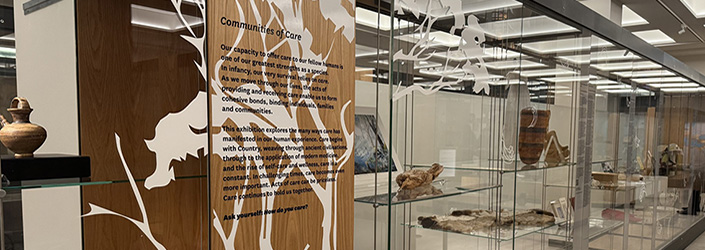
This exhibition explores the many ways care has manifested in our human experience. Care begins with Country, weaving through ancient civilisations, through to the application of modern medicine, and the rise of self-care and wellness, care is a constant. In challenging times, care becomes even more important. Acts of care can be priceless. Care continues to hold us together.
Ask yourself: How do you care?
Play Through History
Play is foundational to our humanity. Board games have been found in societies as far back as ancient Egypt and continue to find popularity in the 21st century. The technological developments of the 20th century led to the creation of digital gaming. There are now over 3.09 billion players of video games worldwide.
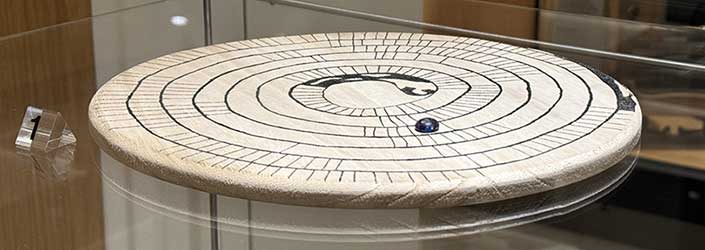
Video games are one of the most popular and profitable forms of media. Many of these games draw upon historical themes. These types of video games are increasing in prominence. We should consider what versions of history players are receiving through their gameplay and what effects this has on their understanding of the past.
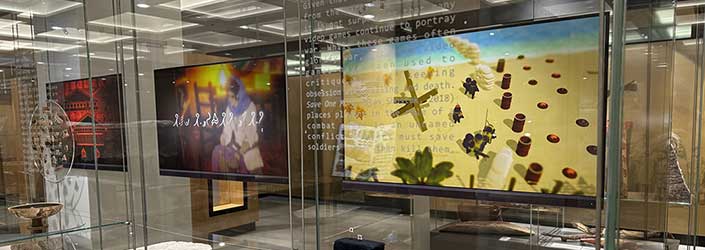
This exhibition connects audiences with both the history of gaming and the ways that games centre, interpret, reinterpret and reimagine history. This duality allows us to see how games have evolved and to explore where this evolution is heading.
We invite you to Play Through History
The Olympic Games Past and Present (July-Sept 2024)
Ahead of the opening of the Paris 2024 Olympic Games, the Macquarie University History Museum showcased our ancient and modern collections in a new display, bringing together objects associated with the modern Olympic Games and ancient Greek sporting activities.
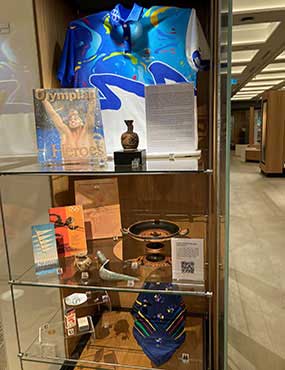 The earliest ancient Olympic Games were held c. 776 BCE, beginning a tradition that lasted approximately 1,200 years. Held every four years in honour of the god Zeus, the ancient games were ‘Panhellenic’ games, open to any male citizen of a Greek city-state (polis), initially in the Peloponnese, but later expanded to anywhere in the ancient Greek world, referred to as Magna Grecia. This was expanded over time to include the Hellenistic kingdoms and the Roman Empire following Rome’s conquest of Greece in 146 BCE. Athlete’s travel to and from the Games was safe-guarded by an Olympic truce (Ekecheiria).
The earliest ancient Olympic Games were held c. 776 BCE, beginning a tradition that lasted approximately 1,200 years. Held every four years in honour of the god Zeus, the ancient games were ‘Panhellenic’ games, open to any male citizen of a Greek city-state (polis), initially in the Peloponnese, but later expanded to anywhere in the ancient Greek world, referred to as Magna Grecia. This was expanded over time to include the Hellenistic kingdoms and the Roman Empire following Rome’s conquest of Greece in 146 BCE. Athlete’s travel to and from the Games was safe-guarded by an Olympic truce (Ekecheiria).
Ancient Olympic events ranged from running events to the elite chariot race, and to the no-holds-barred pankration, a sport akin to today’s mixed martial arts bouts.
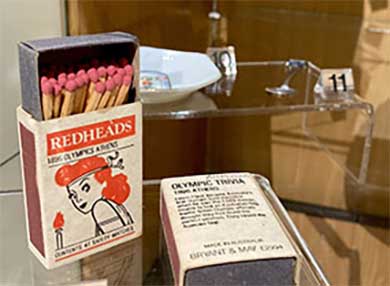 Athletes trained regularly in the gymnasion and competed in the Games with the aim of winning glory for themselves and the polis they represented. Winning the olive wreath of Olympic victory (nike) was the pinnacle of aretê (excellence), like winning a gold medal today. Valuable prizes and honours were often bestowed upon them by their city-states, and songs of praise could even be written for them.
Athletes trained regularly in the gymnasion and competed in the Games with the aim of winning glory for themselves and the polis they represented. Winning the olive wreath of Olympic victory (nike) was the pinnacle of aretê (excellence), like winning a gold medal today. Valuable prizes and honours were often bestowed upon them by their city-states, and songs of praise could even be written for them.
The final ancient Games may have taken place in 393 CE, when they were outlawed by the Christian Emperor Theodosius I, although it is possible that they continued into the 5th century CE.
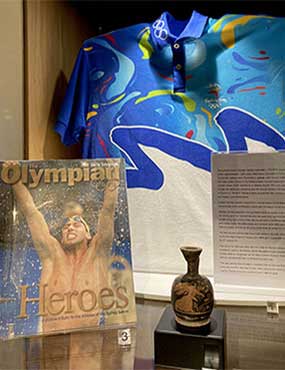 The desire for Olympic glory, and the ideal of Olympic peace, were revived in the nineteenth century. Numerous efforts struggled to gain traction but in 1896 Athens hosted what is recognised as the first modern Olympic Games. In 1906 athletes officially represented their countries for the first time.
The desire for Olympic glory, and the ideal of Olympic peace, were revived in the nineteenth century. Numerous efforts struggled to gain traction but in 1896 Athens hosted what is recognised as the first modern Olympic Games. In 1906 athletes officially represented their countries for the first time.
The new, secular Games retain a symbolic link to Olympia through the torch-lighting ceremony and the relay that follows. Cities around the world compete for the right to host the Games which is a source of great national pride.
Dust of the Earth (2023-2024)
History from a Pottery Perspective
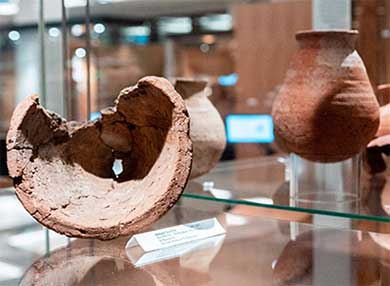 The Macquarie University History Museum is one of only four museums worldwide with pottery collection that span more than 7,000 years of history. These include some of the oldest object on campus as well as examples for contemporary applications and every-day-use of ceramics.
The Macquarie University History Museum is one of only four museums worldwide with pottery collection that span more than 7,000 years of history. These include some of the oldest object on campus as well as examples for contemporary applications and every-day-use of ceramics.
Clay as a material is flexible, ubiquitous and, after firing, durable and impermeable to moisture. The ancient Egyptians held the view that human beings were created and shaped by the god Khnum on a potter’s wheel. According to Genesis 2:7 “(…) the Lord God formed a man formed a man from the dust of the ground and breathed into his nostrils the breath of life, and the man became a living being.” As outlined in ancient creation myths, pottery predates even agriculture and is a companion of human beings for the past 30,000 years.
Join us on our journey and explore with us the evolution of pottery within the context of social history!